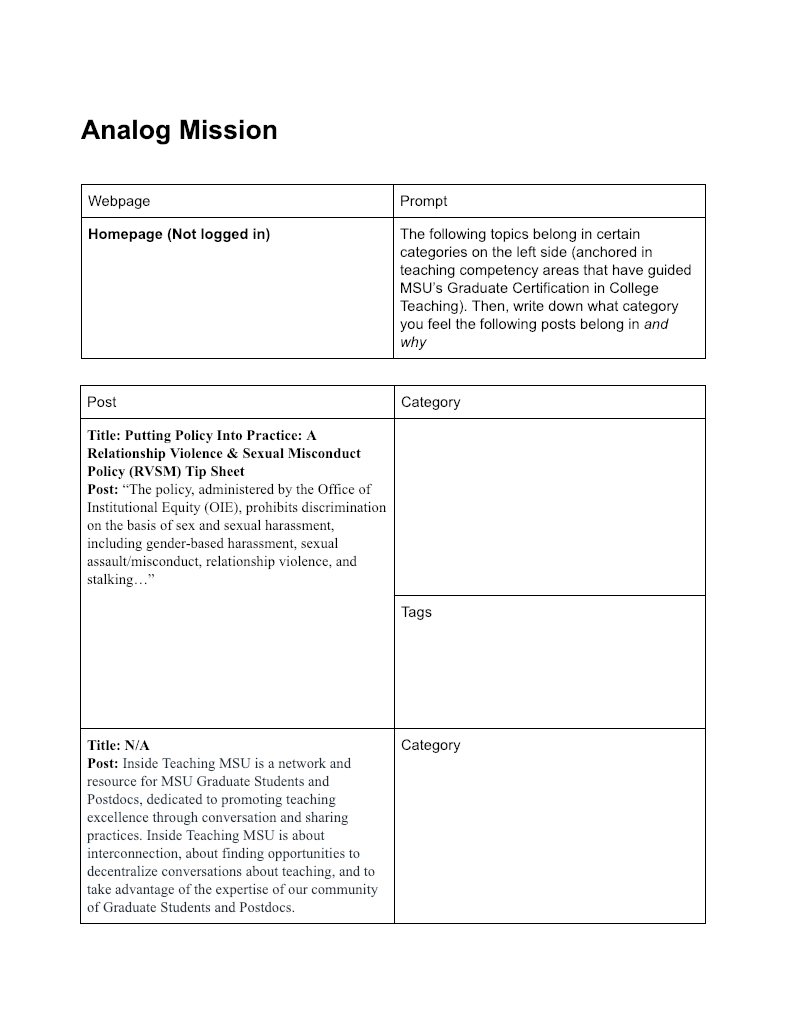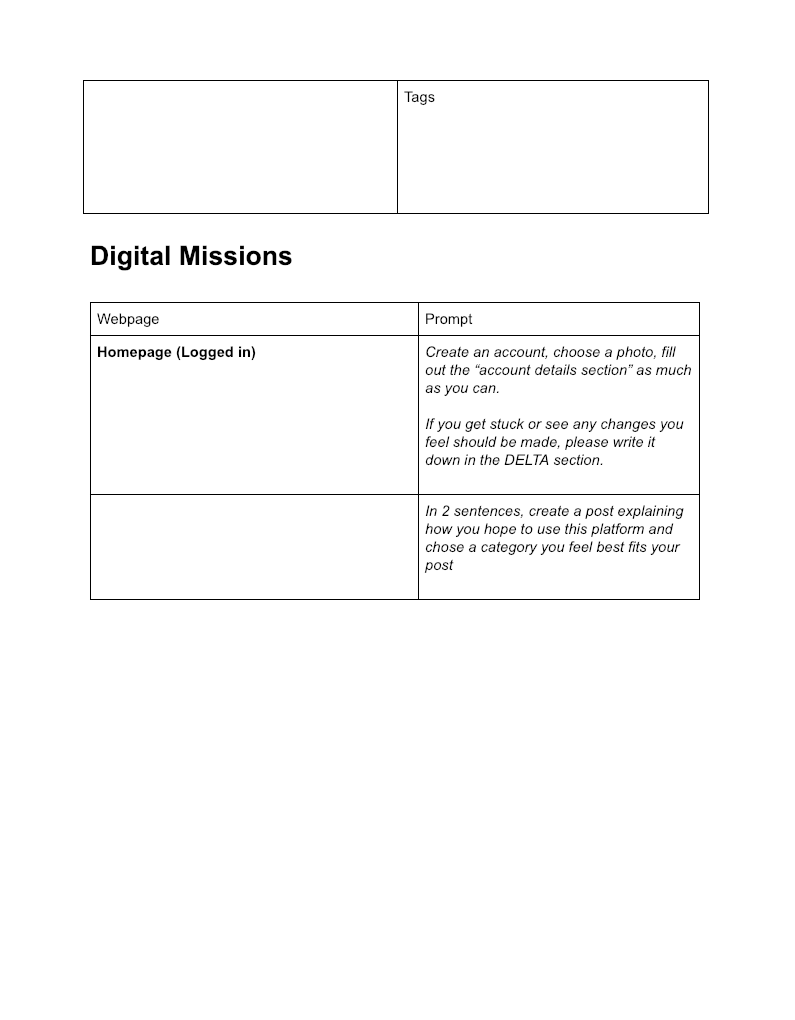User Research Experience
As the User Experience researchers, we created prototype sessions. Krubel and I chose specific sections of the site that I showed to a user group to get their feedback on.
My Role
Prototype Sessions
This video is an example of what a prototype session would look like.
Prototype Session Structure
Krubel and I were responsible for designing prototype sessions to get user feedback in different ways to make changes for the site. We designed our prototype sessions strategically to promote real feedback, including things the users liked and disliked about the site. We separated the session into two parts: analog and digital. The analog section of the prototype test includes missions for the users to do off the site. These missions may include reading posts and matching categories or physically writing on a printed out screenshot of the site. The digital portion of the session was always on the site which allowed our user group to get a feel for what it will be like when the site is live. The reason we split up our session into digital and analog was to ensure that we had our users attention. We originally thought that digital was going to be our only mission, but we decided to add analog to ensure that our users were paying attention as using a computer the whole time can be very distracting. We liked this structure because it was short enough to allow more discussion and specific enough that we got detailed feedback.
Example of an analog mission.
Example of a digital mission
User Research and Feedback
For feedback purposes, we created a printed structure for our users to fill in while they were doing the missions to ensure we got all of their feedback. The feedback structure we use is “plus” and “delta.” The “pluses” are things the users liked about the site and had a positive experience with, while the “deltas” is where we encourage our users to give us feedback on suggestions or changes, or mention any difficulties on the site. Delta is a Greek letter that stands for growth, which is exactly what we want out of our feedback. Many users are hesitant to critique us, so we allow them to mention things that they like about the site in the plus section and give us suggestions in the delta. During the sessions, I would take notes on what I noticed users were struggling with and what areas they liked and caught on to quickly. I would bring that feedback to our research synthesis to focus in on problems areas.
Example of plus and delta sheet
Example of plus and delta sheet
Facilitation of Prototype Sessions
Facilitation was a major part of my work at the Hub for Innovation. Our ability to conduct prototype sessions throughout the semester increased drastically as we practiced and took more leadership roles each time. We conducted about 4 big prototype sessions and several smaller ones throughout a 5 month period. Our user group contained many professors, but also faculty throughout the university who were invested in the creation of ITeachMsu.
In the photo below, you can see an example of our layout of one of the larger prototype sessions. Krubel and I would spend hours planning the timing and structure to ensure we were as prepared as we could be walking into each session.
Our structure stayed pretty consistent throughout the prototype sessions. What really changed was my abilities as a facilitator. After each session, I would take time to reflect and gather feedback from my superiors and Krubel.
My biggest improvement was my patience and anxiety during the prototype sessions. I always thought I needed to bud in whenever someone had an issue, but by the end I realized that taking the background and only helping when I was needed would allow us to gather more rich data as to where people struggled and what they did to solve their issues. I also paid close attention to my body language and ensured that it was inviting and engaging. I wanted the group to feel as though they could give us harsh feedback because the more problems the users bring up, the more data we have to make big changes on the site.
Another aspect of myself that I wanted to improve was my ability to be empathic yet stay on schedule while I am facilitating the session. I felt that sometimes I was too strict on timing and schedule. During the sessions, I practiced my ability to go with the flow. I allowed the users control the conversations and only would guide them in certain directions if needed. I believe my realizations and my attention to detail helped me improve in this area of my work successfully.





